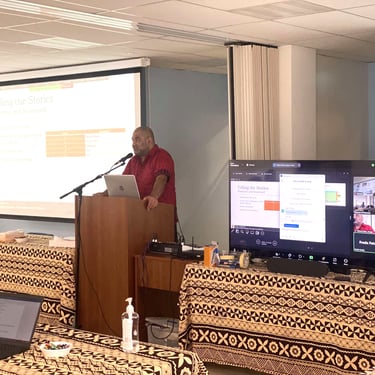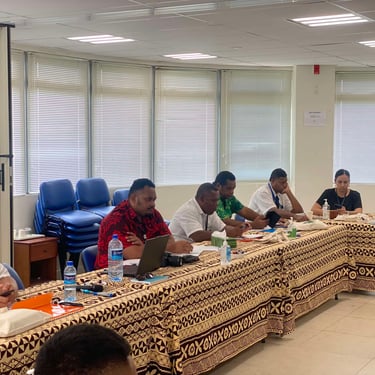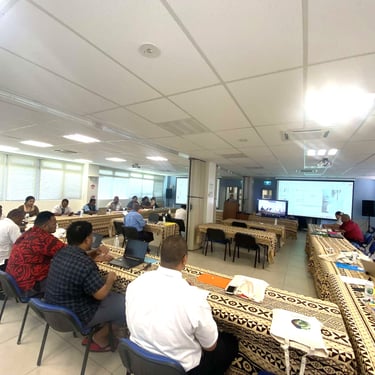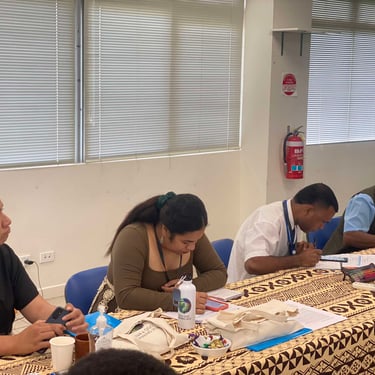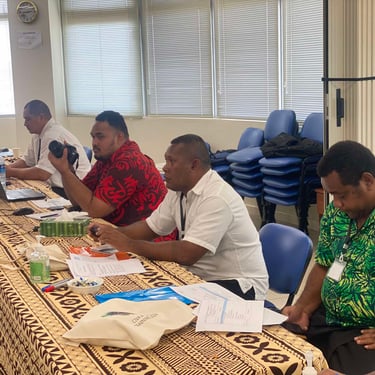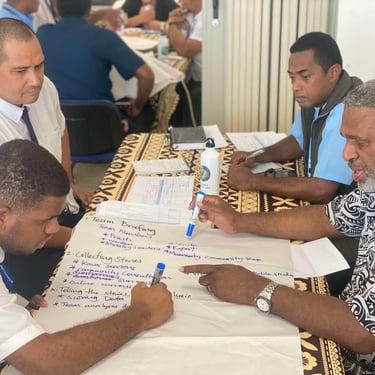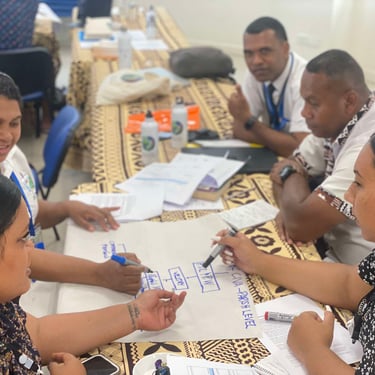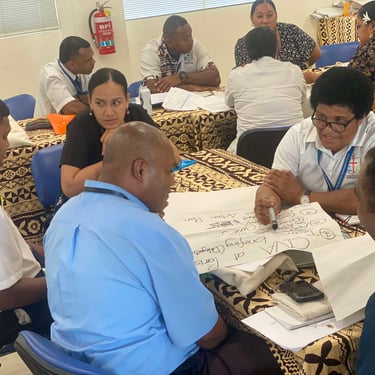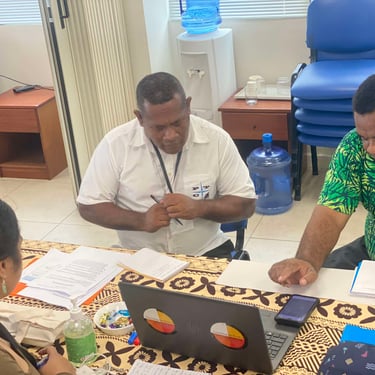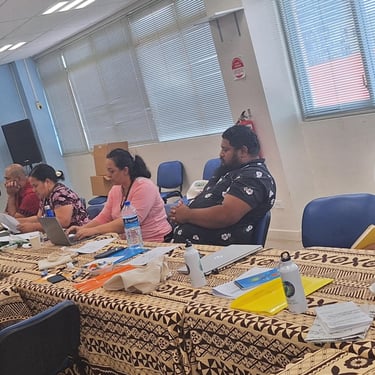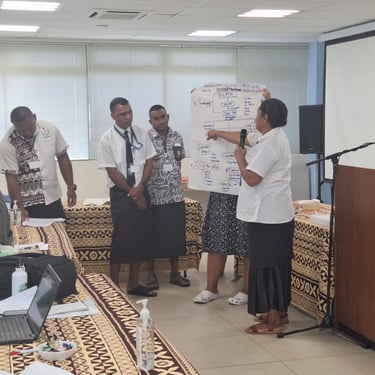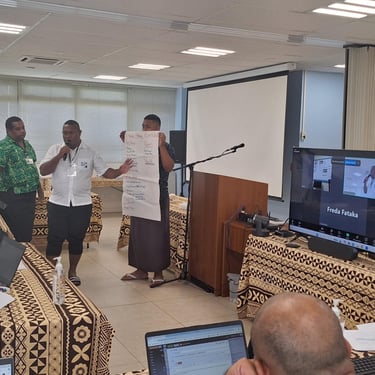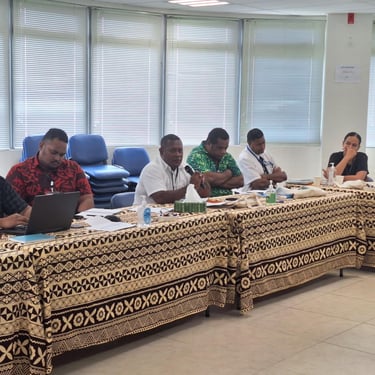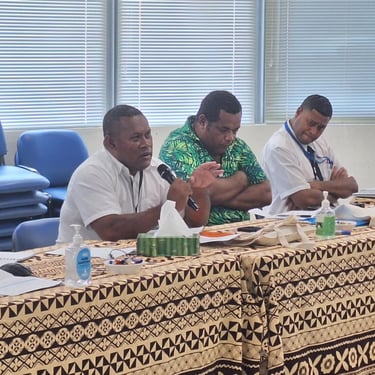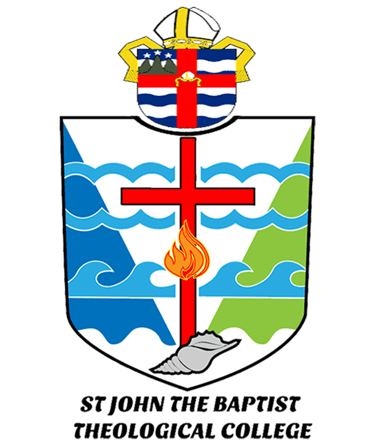Day 2: CIVA & QGIS Training
Building a Safe and Resilient Church
The second day of the CIVA and QGIS training was led by Mr. Viliami Folau, dedicated to deepening the understanding and practical application of the Safe and Resilient Church methodology. This approach equips parishes with tools to assess vulnerabilities, gather and analyze stories, and develop actionable plans for building resilience within their communities. The focus was on creating a framework that not only addresses immediate concerns but also ensures long-term sustainability.
The morning session began with an overview of the Safe and Resilient Church methodology. Participants learned that the process starts with a comprehensive team briefing, where roles are clearly defined, tasks are allocated, and all members are updated on their responsibilities. This ensures that every team member is well-prepared and aligned with the project’s objectives.
Story collection emerged as a crucial step in the methodology. The training emphasized that stories form the foundation of community assessments. These narratives, gathered through interviews, talanoa sessions, and questionnaires, offer deep insights into the challenges and strengths of the parish. By integrating data collection with existing church activities such as youth gatherings and community meetings, teams can foster a more organic and participatory process.
Mapping was another critical component of the day’s discussions. Using tools like QGIS and Google Earth, participants visualized high-risk areas, evacuation routes, and vital community infrastructure. This geographical data not only helps in disaster preparedness but also aids in post-disaster recovery by providing a clear picture of the community’s most vulnerable areas.
The culmination of the methodology is the creation of a Resilient Action Plan. This plan addresses key areas such as food and water security, health and safety, and energy sustainability. It provides a roadmap for parishes to take concrete steps toward enhancing their resilience. Importantly, participants were reminded that the action plan is a living document, requiring regular updates and community input to remain effective and relevant.
The afternoon session focused on implementing the CIVA framework at the parish level. Participants divided into groups to discuss their strategies and present their findings. Each group brought unique insights based on their context. For instance, one group highlighted the importance of engaging traditional leadership structures, such as the vanua, to foster trust and cooperation. By observing cultural protocols like sevusevu, they were able to build stronger community ties and encourage broader participation in the resilience-building process.
Another group emphasized the use of both qualitative and quantitative methods for data collection, including kava sessions, community consultations, and online surveys. They noted that combining these methods with modern mapping tools allowed them to present their findings in a visually impactful way, which is crucial for planning and decision-making.
Throughout the day, several challenges were discussed. Participants noted the difficulty of ensuring community participation, particularly when previous encounters with external organizations had left people disillusioned. Miscommunication and unmet expectations were cited as major barriers to trust. To address these issues, the trainers stressed the importance of transparency, confidentiality, and consistent follow-up. As one participant observed, building resilience is as much about changing mindsets as it is about implementing practical solutions.
The session also highlighted the unique role of the church in this process. Unlike government or NGO programs that may come and go, church-based initiatives are deeply rooted in the community. The existing church structure provides a reliable framework for conducting assessments, gathering data, and implementing action plans. This ensures that the resilience-building efforts are sustained over time and truly owned by the community.
The day concluded with a Q&A session that allowed participants to reflect on their experiences and clarify key aspects of the methodology. Questions ranged from the technical—such as how to ensure data accuracy and confidentiality—to the practical, like managing community expectations and ensuring broad participation. The discussions underscored the importance of adaptability, with participants agreeing that the framework must be tailored to the unique needs and contexts of each parish.
Ultimately, Day 2 of the training was a powerful reminder that resilience is a collective effort. By integrating traditional wisdom, modern tools, and a strong sense of community, parishes can create safe and resilient spaces that stand the test of time. As one participant aptly put it, this training is not just about preparing for disasters; it’s about empowering communities to take ownership of their future.
Day 3 promises to build on this foundation, diving deeper into advanced mapping techniques and data visualization. Stay tuned for more insights and progress as we journey together toward a more resilient future.
